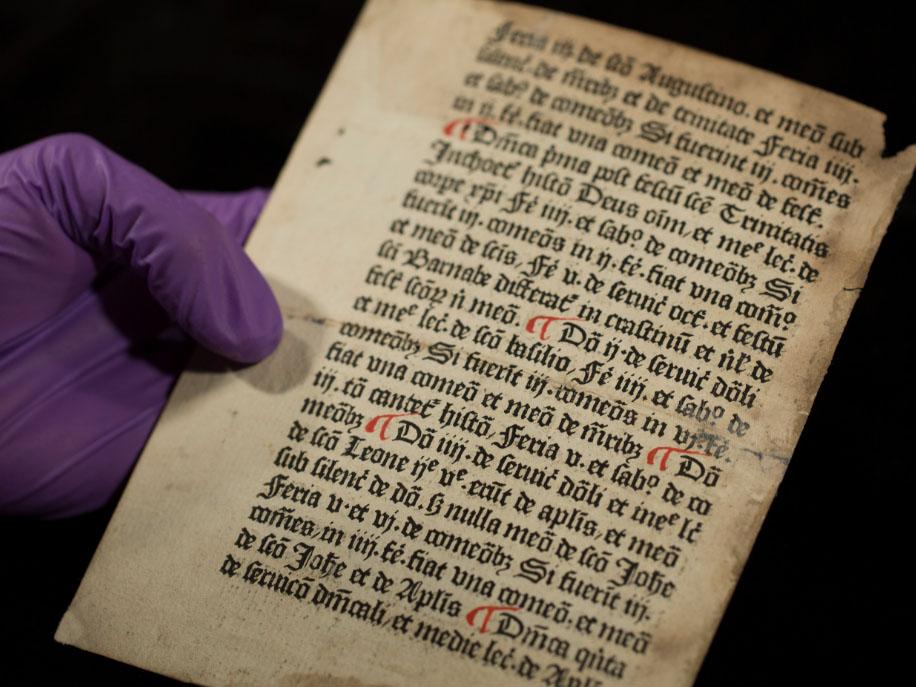One of the first books ever printed in England discovered by university librarian
Two pages are worth £100,000

Your support helps us to tell the story
From reproductive rights to climate change to Big Tech, The Independent is on the ground when the story is developing. Whether it's investigating the financials of Elon Musk's pro-Trump PAC or producing our latest documentary, 'The A Word', which shines a light on the American women fighting for reproductive rights, we know how important it is to parse out the facts from the messaging.
At such a critical moment in US history, we need reporters on the ground. Your donation allows us to keep sending journalists to speak to both sides of the story.
The Independent is trusted by Americans across the entire political spectrum. And unlike many other quality news outlets, we choose not to lock Americans out of our reporting and analysis with paywalls. We believe quality journalism should be available to everyone, paid for by those who can afford it.
Your support makes all the difference.The University of Reading has discovered pages of one of the first books printed in England, dating from the 15th century.
The pages of a mediaeval priest’s handbook, dating to between 1476 and 1477, were found in the University’s archives by Special Collections librarian Erika Delbecque while she was cataloguing thousands of items showing the history of print and graphic design.
They were produced by English printer William Caxton and the two pages are valued at around £100,000.
“This well preserved item is the only one of its kind, and one of just two surviving fragments from this mediaeval Caxton book in existence,” said Ms Delbecque.
“The leaf had previously been pasted into another book for the undignified purpose of reinforcing its spine. We understand it was rescued by a librarian at the University of Cambridge in 1820, who had no idea that it was an original Caxton leaf.”
Hundreds of years ago, printing was a costly and laborious process. Cloth was dissolved in water and the mixture was dried in thin sheets on which to write, and the pads used to ink the type were soaked in urine.
The librarian said she instantly noticed the “trademark blackletter typeface”, the layout and red paragraph marks, which were typically added by hand after printing and which indicated the pages were an example of very early printing in Western Europe.
Written in mediaeval Latin, the pages are from a book called the Sarum Ordinal or Sarum Pye, which explains to priests how to organise religious feast days for English saints.
The University unknowingly obtained the pages when it purchased a collection for £70,000 in 1997 from late typographer John Lewis, and the valuable items sat undiscovered for two decades.
The whole book that contained the two pages was originally around 160 pages long and was produced in Westminster before the Reformation.
Its roots are in the 11th century when the text was made into a manuscript for the Bishop of Salisbury.
Only one other surviving fragment of the book exists at the British Library in London, which holds eight double-sided pages of the document.
Both are incredibly rate finds. According to the Incunabula Short Title Catalogue, there are 79 surviving examples of texts printed in England in 1476 and 1477 from 18 different works. One of them is the newly-discovered Caxton pages at the University of Reading.
The pages will go on public display at the University's special collections department until 30 May.
Join our commenting forum
Join thought-provoking conversations, follow other Independent readers and see their replies
Comments